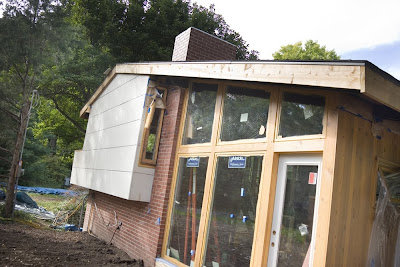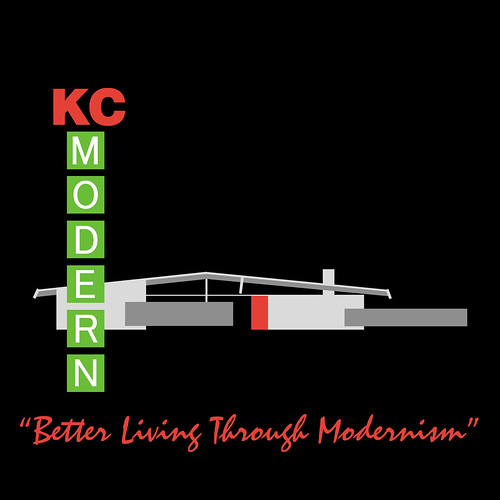 (Please click to enlarge this photo for best viewing)
(Please click to enlarge this photo for best viewing)Name: Home of Don and Francie Drummond
Architect: David B. Runnells
Year Designed: Circa 1946
Builder: Don Drummond
Year Completed: Circa 1947 or 48
Size: Unknown
Location: Mission Hills KS
Type: Residential
Style: Modern
Status: Demolished
Photographer: Unknown
This is the only known image of the house that David Runnells designed for Modern Home Builder, Don Drummond's personal use. Don loaned me this 8x10 transparency film for me to scan. He told me that some photographers, possibly from House Beautiful, were in town to shoot another of his projects and they shot this one image on their lunch break while Francie made them a meal. Notice that almost all of the tables and chairs were by high end, classic-modern designer, T. H. Robsjohn-Gibbings. The one notable exception is the coffee table by Isamu Noguchi. Don Drummond Jr. said that his mother made a special trip to New York to buy all of this furniture. Most of the furniture and the painting of seagulls were in the Drummond home when we visited him in California a few years ago. In fact, he sat in the white chair to the far left almost the entire time we were there. This image is one of my favorite finds in my quest to uncover the story about Don Drummond and David Runnells.









 Not much is known about this
Not much is known about this 




























 Name: Revere Home
Name: Revere Home













